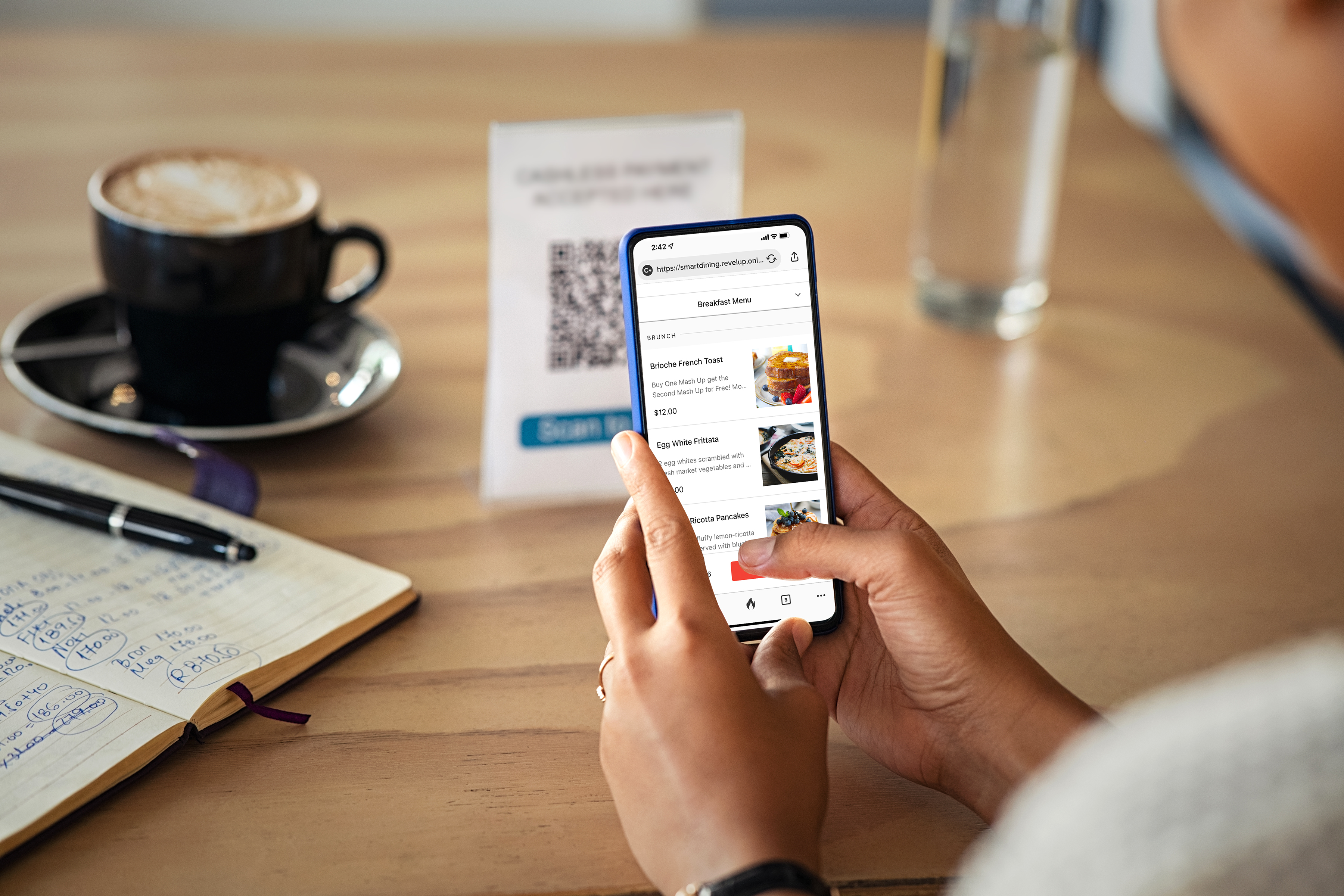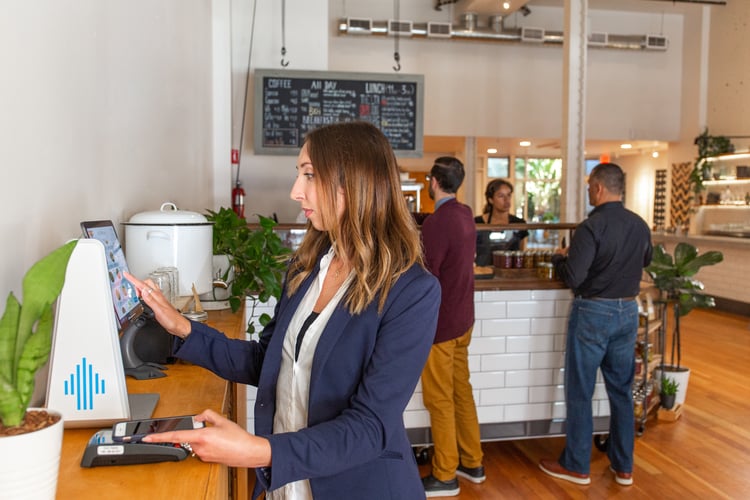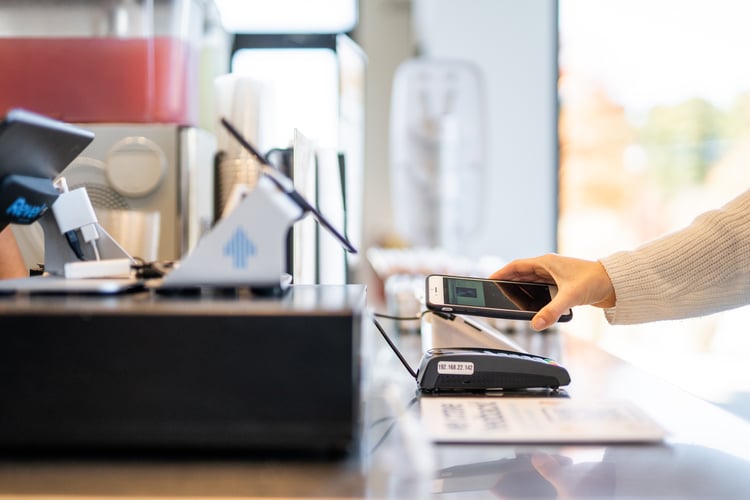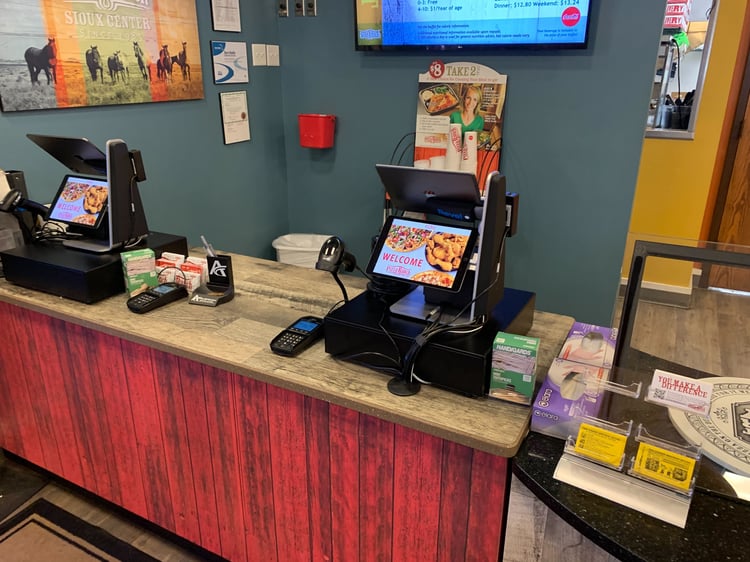Call Sales: +1 (833) 437-3835
Call Sales: +1 (833) 437-3835
Robert Meador | October 25, 2022 |

Restaurant owners are being forced to adapt by increasingly relying on restaurant technology to compensate for the labor shortage. We have compiled some of the most common restaurant technology trends to help keep you up to date in this time of change.
1. Online Ordering
The writing is on the wall in regards to online ordering. For the past several years, and especially during the pandemic, digital ordering has only increased in popularity and use. Restaurant goers have stated in many different questionnaires that the availability of online ordering greatly influences whether they will patronize a specific restaurant. In 2022 and into the foreseeable future, the ability to purchase food online is enough to make or break a restaurant.
And this trend is only expected to continue. However, this is not a trend that owners need to fear. Instead, they can look to online ordering as an opportunity to increase productivity. Based on this trend, restaurant strategies can include prioritizing kitchen staff, reallocating cashiers, and enhancing delivery capabilities.

2. Self-Order Kiosks
More and more restaurants, ranging from small restaurants to growing chains, are moving towards self-order kiosks because they offer a convenient and interactive alternative to the traditional order.
Many restaurant owners have expressed hesitation with this food service technology trend because they worry it will reduce the human interaction appeal of their restaurant. This is understandable; however, when customers enter a restaurant with self-order kiosks, they report a feeling of freedom and modernity. Much like online ordering, self-order kiosks offer potential benefits in efficiency and reduced wait times. By having customers submit their own orders, an owner can adapt to worker shortages by focusing on the kitchen staff.
An additional benefit of the self-order kiosk is the customer’s ability to customize their order. Utilizing the kiosk gives the customer the ability to select or deselect many different ingredients or add-ons, which if done verbally with a cashier or server would take substantially longer, and often results in a higher instance of order errors.
3. Mobile Payments
Speed is king in the restaurant business, and mobile payments are a great way to facilitate the speed of customer interactions. Mobile payments have come a long way in the last few years, and they are now generally viewed as a safe, secure, and easy way to make payments not only for food but for all types of purchases.
Mobile payments are an especially important trend in food delivery, as most online orders are being made through cell phones, both through individual restaurant websites and third-party delivery apps. A rapidly growing number of customers feel that mobile payment is the easiest method of payment and is therefore, by default, the future. As any restaurant owner will know, convenience is a strong motivator for customers, and it often dictates the path the restaurant industry will ultimately take. 
4. Prep Automation
Many industries in our modern world have become increasingly automated, and the restaurant industry is no exception. With the widespread labor shortages in the U.S., restaurant tech companies are quickly trying to bridge the gap by devising and implementing new automation machines for the kitchen. So-called “Robochefs” are being created to complete the more procedural kitchen prep tasks: cutting, dicing, stirring, temperature regulation, etc.
Although these automation machines are not currently widespread in the restaurant industry, the technology is advancing at a rapid pace and could potentially become the norm in only a few years time. If these technologies do prove their worth and are adopted across the nation, the entire dilemma of employee shortages could drastically change.
5. QR Codes
Customers are officially coming around on QR codes. Despite being introduced before the pandemic, QR codes became commonplace during that time because of their ease of use and contactless nature. As with any new technology, there was initial hesitation, but once COVID-19 popularized QR codes, people quickly learned that the technology was simple, easy to use, and hygienic, and customers began to prefer them.
QR codes also benefit restaurants by reducing the cost of menu production and by directing traffic to their websites. Customers may take menus for granted, but owners will know that menus can amount to a hefty expense: the initial printing of them, the replacing of them, the constant updating of them, etc. However, with QR codes, owners can easily change or update their menus online. This also familiarizes the customer with the restaurant’s website, which raises the probability of them using it again in the future.
6. Online Table Reservation
In the past, people would predominantly call restaurants to inquire about a reservation. Or, if a restaurant lacked the system to schedule reservations, customers would be left to wait, sometimes for long periods of time, naturally reducing the experience. With online table reservations, a restaurant can eliminate the burden of dealing with phone calls and focus instead on the food.
Online table reservation functions as an organizational tool that can be both beneficial to the customer (the process is simple, and they have peace of mind in securing a reservation) and the restaurant (there is less need to allocate workforce to handling calls, and the schedule is self-generated). As a new restaurant technology, online table reservation can save both customers and staff a headache.
7. Food Delivery Drones
The future is now, it would seem, for the restaurant industry. For years, food delivery drones have been theoretically speculated about, but with the COVID-era and post-COVID-era focus on food delivery, they could be the future. Utilizing drones would naturally fill the demand for delivery drivers and could offer substantial increases in efficiency and speed of delivery.
Many owners still have concerns about reliability and initial cost for drones. In 2022, these are still legitimate concerns, both of which are keeping food delivery drones an emergent restaurant technology as of yet. However, drone technology is developing at an accelerated rate, and in the near future, they are expected to be more reliable and cost-efficient. 
8. POS Systems
Point of sale (POS) systems are not new to the industry, but they are becoming increasingly essential for ease of purchase and general management. POS systems have developed beyond simple transaction methods; they now offer full restaurant management suites, in which owners can conduct inventory cataloging and review, manage staff scheduling, and more. Users have reported a more consistent and effective workflow in nearly every aspect of their business.
Revel Systems® POS and business management platform is the original cloud-based system for iOS. If you are looking to integrate a POS system into your restaurant, go with the company that has done it with the best infrastructure for the longest time. For more information, visit our website or call +1 (833) 437-3835.